[English] 日本語
 Yorodumi
Yorodumi- PDB-5osq: ZP-N domain of mammalian sperm receptor ZP3 (crystal form II, pro... -
+ Open data
Open data
- Basic information
Basic information
| Entry | Database: PDB / ID: 5osq | |||||||||
|---|---|---|---|---|---|---|---|---|---|---|
| Title | ZP-N domain of mammalian sperm receptor ZP3 (crystal form II, processed in P21221) | |||||||||
 Components Components | Maltose-binding periplasmic protein,Zona pellucida sperm-binding protein 3 | |||||||||
 Keywords Keywords |  CELL ADHESION / CELL ADHESION /  FERTILIZATION / FERTILIZATION /  OOCYTE / EGG COAT / OOCYTE / EGG COAT /  ZONA PELLUCIDA / ZONA PELLUCIDA /  VITELLINE ENVELOPE / ZP DOMAIN / EGG-SPERM INTERACTION / SPECIES-SPECIFIC GAMETE RECOGNITION / VITELLINE ENVELOPE / ZP DOMAIN / EGG-SPERM INTERACTION / SPECIES-SPECIFIC GAMETE RECOGNITION /  SPECIATION / SPECIATION /  BIODIVERSITY / BIODIVERSITY /  INFERTILITY / INFERTILITY /  EXTRACELLULAR MATRIX / IMMUNOGLOBULIN-LIKE FOLD / EXTRACELLULAR MATRIX / IMMUNOGLOBULIN-LIKE FOLD /  GLYCOPROTEIN / GLYCOPROTEIN /  RECEPTOR / RECEPTOR /  SECRETED / SECRETED /  TRANSMEMBRANE TRANSMEMBRANE | |||||||||
| Function / homology |  Function and homology information Function and homology informationpositive regulation of type IV hypersensitivity / positive regulation of acrosomal vesicle exocytosis / positive regulation of antral ovarian follicle growth / Interaction With Cumulus Cells And The Zona Pellucida / egg coat formation / positive regulation of humoral immune response / structural constituent of egg coat / egg coat /  acrosin binding / negative regulation of binding of sperm to zona pellucida ...positive regulation of type IV hypersensitivity / positive regulation of acrosomal vesicle exocytosis / positive regulation of antral ovarian follicle growth / Interaction With Cumulus Cells And The Zona Pellucida / egg coat formation / positive regulation of humoral immune response / structural constituent of egg coat / egg coat / acrosin binding / negative regulation of binding of sperm to zona pellucida ...positive regulation of type IV hypersensitivity / positive regulation of acrosomal vesicle exocytosis / positive regulation of antral ovarian follicle growth / Interaction With Cumulus Cells And The Zona Pellucida / egg coat formation / positive regulation of humoral immune response / structural constituent of egg coat / egg coat /  acrosin binding / negative regulation of binding of sperm to zona pellucida / positive regulation of acrosome reaction / positive regulation of ovarian follicle development / binding of sperm to zona pellucida / humoral immune response mediated by circulating immunoglobulin / oocyte development / blastocyst formation / acrosin binding / negative regulation of binding of sperm to zona pellucida / positive regulation of acrosome reaction / positive regulation of ovarian follicle development / binding of sperm to zona pellucida / humoral immune response mediated by circulating immunoglobulin / oocyte development / blastocyst formation /  regulation of signaling receptor activity / positive regulation of leukocyte migration / detection of maltose stimulus / maltose transport complex / positive regulation of interleukin-4 production / regulation of signaling receptor activity / positive regulation of leukocyte migration / detection of maltose stimulus / maltose transport complex / positive regulation of interleukin-4 production /  maltose binding / maltose transport / maltodextrin transmembrane transport / carbohydrate transport / carbohydrate transmembrane transporter activity / ATP-binding cassette (ABC) transporter complex, substrate-binding subunit-containing / positive regulation of T cell proliferation / ATP-binding cassette (ABC) transporter complex / cell chemotaxis / maltose binding / maltose transport / maltodextrin transmembrane transport / carbohydrate transport / carbohydrate transmembrane transporter activity / ATP-binding cassette (ABC) transporter complex, substrate-binding subunit-containing / positive regulation of T cell proliferation / ATP-binding cassette (ABC) transporter complex / cell chemotaxis /  extracellular matrix / positive regulation of inflammatory response / positive regulation of type II interferon production / outer membrane-bounded periplasmic space / extracellular matrix / positive regulation of inflammatory response / positive regulation of type II interferon production / outer membrane-bounded periplasmic space /  carbohydrate binding / collagen-containing extracellular matrix / carbohydrate binding / collagen-containing extracellular matrix /  periplasmic space / periplasmic space /  receptor ligand activity / negative regulation of DNA-templated transcription / DNA damage response / positive regulation of DNA-templated transcription / receptor ligand activity / negative regulation of DNA-templated transcription / DNA damage response / positive regulation of DNA-templated transcription /  extracellular space / extracellular space /  membrane / identical protein binding / membrane / identical protein binding /  plasma membrane plasma membraneSimilarity search - Function | |||||||||
| Biological species |   Escherichia coli K-12 (bacteria) Escherichia coli K-12 (bacteria)  Mus musculus (house mouse) Mus musculus (house mouse) | |||||||||
| Method |  X-RAY DIFFRACTION / X-RAY DIFFRACTION /  SYNCHROTRON / SYNCHROTRON /  MOLECULAR REPLACEMENT / Resolution: 2.05 Å MOLECULAR REPLACEMENT / Resolution: 2.05 Å | |||||||||
 Authors Authors | Jovine, L. / Monne, M. | |||||||||
| Funding support |  Sweden, 2items Sweden, 2items
| |||||||||
 Citation Citation |  Journal: Nature / Year: 2008 Journal: Nature / Year: 2008Title: Crystal structure of the ZP-N domain of ZP3 reveals the core fold of animal egg coats Authors: Monne, M. / Han, L. / Schwend, T. / Burendahl, S. / Jovine, L. #1: Journal: Cell(Cambridge,Mass.) / Year: 1980 Title: Mammalian Sperm-Egg Interaction: Identification of a Glycoprotein in Mouse Egg Zonae Pellucidae Possessing Receptor Activity for Sperm Authors: Bleil, J.D. / Wassarman, P.M. #2: Journal: FEBS Lett. / Year: 1992 Title: A large domain common to sperm receptors (Zp2 and Zp3) and TGF-beta type III receptor Authors: Bork, P. / Sander, C. #3: Journal: Nat Cell Biol / Year: 2002 Title: The ZP domain is a conserved module for polymerization of extracellular proteins. Authors: Luca Jovine / Huayu Qi / Zev Williams / Eveline Litscher / Paul M Wassarman /  Abstract: Many eukaryotic extracellular proteins share a sequence of unknown function, called the zona pellucida (ZP) domain. Among these proteins are the mammalian sperm receptors ZP2 and ZP3, non-mammalian ...Many eukaryotic extracellular proteins share a sequence of unknown function, called the zona pellucida (ZP) domain. Among these proteins are the mammalian sperm receptors ZP2 and ZP3, non-mammalian egg coat proteins, Tamm-Horsfall protein (THP), glycoprotein-2 (GP-2), alpha- and beta-tectorins, transforming growth factor (TGF)-beta receptor III and endoglin, DMBT-1 (deleted in malignant brain tumour-1), NompA (no-mechanoreceptor-potential-A), Dumpy and cuticlin-1 (refs 1,2). Here, we report that the ZP domain of ZP2, ZP3 and THP is responsible for polymerization of these proteins into filaments of similar supramolecular structure. Most ZP domain proteins are synthesized as precursors with carboxy-terminal transmembrane domains or glycosyl phosphatidylinositol (GPI) anchors. Our results demonstrate that the C-terminal transmembrane domain and short cytoplasmic tail of ZP2 and ZP3 are not required for secretion, but are essential for assembly. Finally, we suggest a molecular basis for dominant human hearing disorders caused by point mutations within the ZP domain of alpha-tectorin. #4: Journal: Proc Natl Acad Sci U S A / Year: 2004 Title: A duplicated motif controls assembly of zona pellucida domain proteins. Authors: Luca Jovine / Huayu Qi / Zev Williams / Eveline S Litscher / Paul M Wassarman /  Abstract: Many secreted eukaryotic glycoproteins that play fundamental roles in development, hearing, immunity, and cancer polymerize into filaments and extracellular matrices through zona pellucida (ZP) ...Many secreted eukaryotic glycoproteins that play fundamental roles in development, hearing, immunity, and cancer polymerize into filaments and extracellular matrices through zona pellucida (ZP) domains. ZP domain proteins are synthesized as precursors containing C-terminal propeptides that are cleaved at conserved sites. However, the consequences of this processing and the mechanism by which nascent proteins assemble are unclear. By microinjection of mutated DNA constructs into growing oocytes and mammalian cell transfection, we have identified a conserved duplicated motif [EHP (external hydrophobic patch)/IHP (internal hydrophobic patch)] regulating the assembly of mouse ZP proteins. Whereas the transmembrane domain (TMD) of ZP3 can be functionally replaced by an unrelated TMD, mutations in either EHP or IHP do not hinder secretion of full-length ZP3 but completely abolish its assembly. Because mutants truncated before the TMD are not processed, we conclude that the conserved TMD of mammalian ZP proteins does not engage them in specific interactions but is essential for C-terminal processing. Cleavage of ZP precursors results in loss of the EHP, thereby activating secreted polypeptides to assemble by using the IHP within the ZP domain. Taken together, these findings suggest a general mechanism for assembly of ZP domain proteins. #5: Journal: Annu Rev Biochem / Year: 2005 Title: Zona pellucida domain proteins. Authors: Luca Jovine / Costel C Darie / Eveline S Litscher / Paul M Wassarman /  Abstract: Many eukaryotic proteins share a sequence designated as the zona pellucida (ZP) domain. This structural element, present in extracellular proteins from a wide variety of organisms, from nematodes to ...Many eukaryotic proteins share a sequence designated as the zona pellucida (ZP) domain. This structural element, present in extracellular proteins from a wide variety of organisms, from nematodes to mammals, consists of approximately 260 amino acids with eight conserved cysteine (Cys) residues and is located close to the C terminus of the polypeptide. ZP domain proteins are often glycosylated, modular structures consisting of multiple types of domains. Predictions can be made about some of the structural features of the ZP domain and ZP domain proteins. The functions of ZP domain proteins vary tremendously, from serving as structural components of egg coats, appendicularian mucous houses, and nematode dauer larvae, to serving as mechanotransducers in flies and receptors in mammals and nonmammals. Generally, ZP domain proteins are present in filaments and/or matrices, which is consistent with the role of the domain in protein polymerization. A general mechanism for assembly of ZP domain proteins has been presented. It is likely that the ZP domain plays a common role despite its presence in proteins of widely diverse functions. #6: Journal: BMC Biochem. / Year: 2006 Title: The PLAC1-homology region of the ZP domain is sufficient for protein polymerisation Authors: Jovine, L. / Janssen, W.G. / Litscher, E.S. / Wassarman, P.M. #7:  Journal: Cell / Year: 2010 Journal: Cell / Year: 2010Title: Insights into egg coat assembly and egg-sperm interaction from the X-ray structure of full-length ZP3. Authors: Ling Han / Magnus Monné / Hiroki Okumura / Thomas Schwend / Amy L Cherry / David Flot / Tsukasa Matsuda / Luca Jovine /  Abstract: ZP3, a major component of the zona pellucida (ZP) matrix coating mammalian eggs, is essential for fertilization by acting as sperm receptor. By retaining a propeptide that contains a polymerization- ...ZP3, a major component of the zona pellucida (ZP) matrix coating mammalian eggs, is essential for fertilization by acting as sperm receptor. By retaining a propeptide that contains a polymerization-blocking external hydrophobic patch (EHP), we determined the crystal structure of an avian homolog of ZP3 at 2.0 Å resolution. The structure unveils the fold of a complete ZP domain module in a homodimeric arrangement required for secretion and reveals how EHP prevents premature incorporation of ZP3 into the ZP. This suggests mechanisms underlying polymerization and how local structural differences, reflected by alternative disulfide patterns, control the specificity of ZP subunit interaction. Close relative positioning of a conserved O-glycan important for sperm binding and the hypervariable, positively selected C-terminal region of ZP3 suggests a concerted role in the regulation of species-restricted gamete recognition. Alternative conformations of the area around the O-glycan indicate how sperm binding could trigger downstream events via intramolecular signaling. #8: Journal: Biol. Reprod. / Year: 2011 Title: A structural view of egg coat architecture and function in fertilization Authors: Monne, M. / Jovine, L. | |||||||||
| History |
|
- Structure visualization
Structure visualization
| Structure viewer | Molecule:  Molmil Molmil Jmol/JSmol Jmol/JSmol |
|---|
- Downloads & links
Downloads & links
- Download
Download
| PDBx/mmCIF format |  5osq.cif.gz 5osq.cif.gz | 548.2 KB | Display |  PDBx/mmCIF format PDBx/mmCIF format |
|---|---|---|---|---|
| PDB format |  pdb5osq.ent.gz pdb5osq.ent.gz | 462.9 KB | Display |  PDB format PDB format |
| PDBx/mmJSON format |  5osq.json.gz 5osq.json.gz | Tree view |  PDBx/mmJSON format PDBx/mmJSON format | |
| Others |  Other downloads Other downloads |
-Validation report
| Arichive directory |  https://data.pdbj.org/pub/pdb/validation_reports/os/5osq https://data.pdbj.org/pub/pdb/validation_reports/os/5osq ftp://data.pdbj.org/pub/pdb/validation_reports/os/5osq ftp://data.pdbj.org/pub/pdb/validation_reports/os/5osq | HTTPS FTP |
|---|
-Related structure data
| Related structure data |  3d4cSC 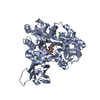 3d4gC 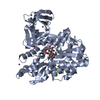 3ef7C S: Starting model for refinement C: citing same article ( |
|---|---|
| Similar structure data |
- Links
Links
- Assembly
Assembly
| Deposited unit | 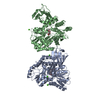
| |||||||||||||||||||||||||||||||||||||||||||||||||||||||||||||||||||||||
|---|---|---|---|---|---|---|---|---|---|---|---|---|---|---|---|---|---|---|---|---|---|---|---|---|---|---|---|---|---|---|---|---|---|---|---|---|---|---|---|---|---|---|---|---|---|---|---|---|---|---|---|---|---|---|---|---|---|---|---|---|---|---|---|---|---|---|---|---|---|---|---|---|
| 1 | 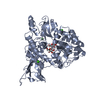
| |||||||||||||||||||||||||||||||||||||||||||||||||||||||||||||||||||||||
| 2 | 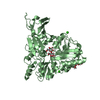
| |||||||||||||||||||||||||||||||||||||||||||||||||||||||||||||||||||||||
| Unit cell |
| |||||||||||||||||||||||||||||||||||||||||||||||||||||||||||||||||||||||
| Noncrystallographic symmetry (NCS) | NCS domain:
NCS domain segments: Ens-ID: 1
|
 Movie
Movie Controller
Controller



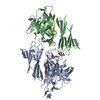




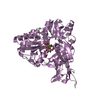
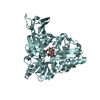



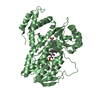
 PDBj
PDBj





